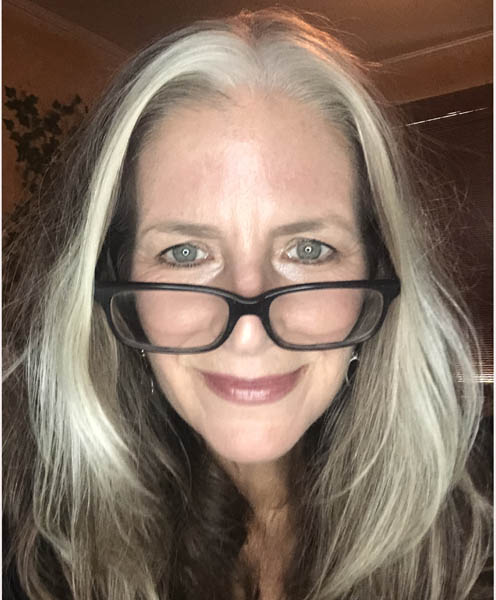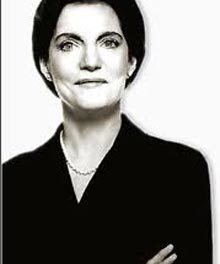My family and I were watching the final episode of ‘Stranger Things,’ Season Four. Amelia had already seen it but was kindly rewatching it with her dear old parents because ‘Stranger Things’ is a family tradition at our house.
“I’m so glad they finally gave us some backstory on the Mind Flayer,” I said during a break. “It’s starting to make sense. But I still don’t totally get this monster. What are the writers trying to say? Is it psychological commentary? Or maybe some critique of the Reagan Era? What’s the metaphor, exactly? What does it mean?”
“Ugh, Mom, don’t ruin it,” says Amelia, with a familiar eye roll.
“Yeah,” says Jeff, “It doesn’t mean anything. It’s a monster.”
This is a typical conversation in my life, both at home and elsewhere. I’m always super-eager to understand the monsters. Nobody else seems interested. In fact, most people find my questions boring, irrelevant, and possibly absurd.
In the last few weeks, I’ve tried striking up scintillating conversations about the monsters in ‘Stranger Things,’ Jordan Peele’s new movie ‘Nope,’ and ‘Star Trek: Strange New Worlds,’ all to little avail. The prevailing attitude seems to be: They’re monsters. What’s to understand?
This just doesn’t fly with me. And I blame my liberal arts education.
(I know, I know . . . I’m not alone. There’s a growing chorus of folks who blame the liberal arts education for every damn thing under the sun. And it’s a waste of money, too, they say. That’s for another column.)
I have no idea what it’s like to be an English Major in 2022 – do they even exist anymore? – but in my day, it was all about digging beneath the flashy, obvious surface of things to root out the deeper significance.
Was Moby Dick just a whale? Of course not! Moby Dick was a symbol. A multi-layered symbol, at that. Was Count Dracula just a vampire? (Well, yes, but what does it mean to be a vampire? What are the social and cultural implications?) And what about Frankenstein’s monster? Just a monster? Please! Mary Shelley wasn’t that shallow.
In my English majoring days, a monster was never just a monster. Monsters had meaning. Always.
In 2018, Victoria Pengilley wrote for the online journal Big Ideas:
A giant kraken rising from the oceans, the Medusa of ancient myths, blood-thirsty vampires, brain-eating zombies — we’ve long been drawn to tales of terrifying monsters.
But these fictional creatures may be a little more real than you think.
They tend to reflect the power dynamics, prejudices and fears of a society, and the people in it.
“It comes back to the idea that a monster arises from society’s very deepest fears,” says Liz Gloyn, who lectures in classical literature at London’s Royal Holloway University.
“The shape is defined by what a culture is scared of.’”
Victoria Pengilley and Liz Gloyn are clearly former English Majors and women after my own heart. I still look at monsters this way, and I guess I always will.
I’m not just talking about fictional monsters, either. I’m talking about those figures and phenomena that loom so large in the public narrative they hover over our collective imagination like King Kong over New York City.
Donald Trump. Joe Biden. Liberals. Conservatives. Christian Nationalists. Globalist Elites. Radical Environmentalists. Climate Deniers. Wokesters. Haters. Trumpists. Antifa. Proud Boys . . .
Pick your monster. Heck, pick a whole deck of monsters.
Or maybe your favorite monster’s a what, not a who. The January 6th hearings. The Dobbs ruling. Runaway inflation. Climate change. Critical Race Theory. Voter fraud. Voter suppression.
The possibilities are endless. The monsters are everywhere.
How well do you know your monsters? Do you understand them? What made them? What motivates them? How did they become monsters?
Maybe you don’t want to understand your monsters. Maybe you think understanding is tantamount to appeasing. Even humanizing. Once you humanize your monsters, how do you fight them?
It’s a legitimate question.
The most dangerous monster, to me, is our failure to agree about who the monsters are. We live in an era when one American’s monster is another’s hero, and vice versa, and that’s an enormous problem. It’s the monster I’ve been trying to slay for at least a decade now, through my writing. I’m not having much luck – my platform is quite small, after all – and this monster just keeps growing, consuming everything in its path.
I think that’s because most people are more like my family watching ‘Stranger Things.’ For most people, a monster is just a monster, and monsters must be condemned in no uncertain terms, not understood. We must brook no quarter when it comes to monsters.
Yesterday, I treated myself to ‘Where the Crawdads Sing,’ the new movie based on Delia Owens’ bestselling novel. Along with just about every other book club member in America, I adored the book, and I really liked the movie, too. It fails to rise to the novel’s level of lyricism – that would be almost impossible – but it’s a gorgeous, haunting adaptation.
At the end of the story comes a “monster” of a revelation that shocks the conscience. You don’t see it coming – I didn’t, anyway – and while it’s rather easy to understand, in the context of the narrative, it is, nonetheless, a monstrous thing.
What do you do with a monster you understand? A monster with which, maybe, you even sympathize?
That’s the question, isn’t it? The question that leads to more questions. Life gets a thousand times more complicated when we begin to understand our monsters.
And Book Club gets a lot more interesting.
I’m looking forward to the next meeting of my Book Club. We’ll be discussing ‘When Women Were Dragons,’ a captivating novel in which women become . . . well, dragons. And like every dragon you’ve ever read about, they’re fierce and dazzling, beautiful and terrible.
I’m not exactly sure what it means for women to become dragons. In the novel, some transform out of rage, some out of frustration, some out of wistful longing and some out of pure desire. They destroy and create, terrify and console, explore the universe and keep cozy households.
I can’t wait to discuss these dragons with my Book Club friends. I am longing to understand these particular monsters, and I have high hopes for the conversation. I intend to use words like “metaphor” and “symbol” with reckless abandon. You can do that at Book Club and nobody finds you tiresome.
And if they do, you just pour them another glass of wine.








